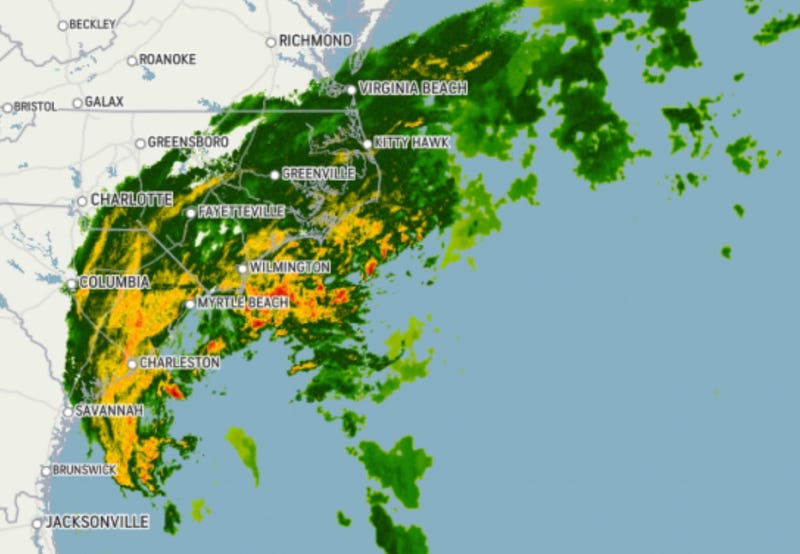
(ACCUWEATHER) Strong winds from Hurricane Ian are becoming more prevalent along the South Carolina coast as the hurricane edges closer to land. The National Weather Service in Charleston, South Carolina said a 74 mph hurricane-force wind gust was recently measured by an offshore buoy, while a 66 mph wind gust was measured along Folly Beach, SC.
As of 8 a.m. EDT Friday, Ian was located about 105 miles south-southeast of Charleston. The storm’s maximum sustained winds were around 85 mph and it was moving to the north at a speed of 9 mph.
Forecasters say that the hurricane will turn northward and then northwestward. Ian will come ashore just to the north of Charleston by early afternoon. Although not nearly as powerful as when it made landfall in Florida, Ian is still expected to unleash flooding rain, storm surge, damaging winds and even isolated tornadoes.
Combined with rising tide levels, that could bring a significant flood threat to Charleston and other parts of the region. AccuWeather forecasters are warning of a life-threatening storm surge of 3-6 feet in the Charleston area.
Rain from Ian stretched for more than 425 miles along the southeast coast, drenching cities from Hilton Head Island, South Carolina, to Virginia Beach, Virginia. Life-threatening impacts will continue to spread northwards across the Southeast as Ian swings back over land on Friday. Hazards will include flooding rainfall, dangerous storm surge, damaging winds and severe weather as Ian makes that trek.
Ian lost wind intensity and was downgraded to a tropical storm early Thursday morning after turning deadly as it rampaged across Florida, carving a path of destruction and causing severe flooding.
Cities such as Charleston and Myrtle Beach, South Carolina, and Wilmington, North Carolina, will be at risk for a water level rise of 3-6 feet with locally higher levels from Friday to Friday night. The worst conditions will be just to the north of where the eye moves inland, which could be just north of Charleston and perhaps near Georgetown or Myrtle Beach.
"The Outer Banks of North Carolina are particularly vulnerable to coastal erosion, and some areas have not recovered following a destructive storm back in the spring and ongoing impacts from climate change and rising seas," AccuWeather Meteorologist Reneé Duff said.
As Ian drifts inland over the Carolinas this weekend, heavy rain will be pushed and pulled along as well. The risk of flooding rainfall is likely to stretch hundreds of miles away from the coast.
